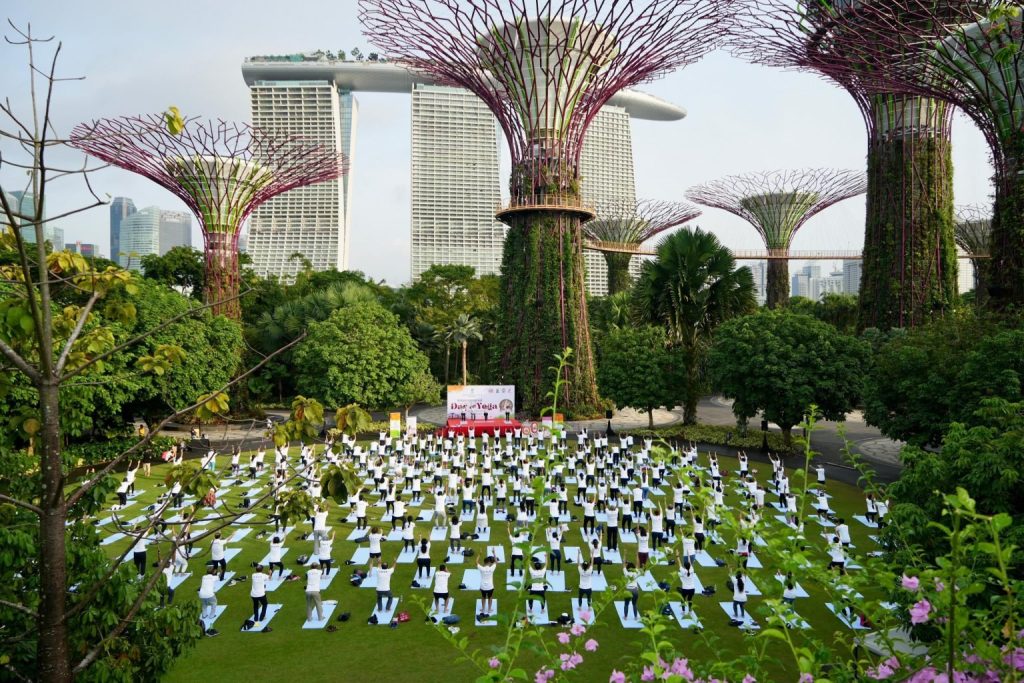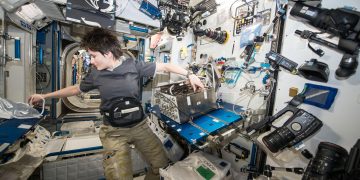Singapore’s Futuristic Pilot: Synthetic Trees with Photosynthetic AI
In early 2025, the skyline of Singapore’s Marina Bay was subtly altered by the arrival of a new urban feature that was both futuristic and controversial—artificial trees powered by AI. These towering structures, made from 3D-printed polymers and coated with a nanotech film, claimed to replicate photosynthesis through machine learning–guided chemical processes. Developed by EcoSynth Labs, the technology promised to sequester carbon dioxide, generate trace amounts of oxygen, and adjust dynamically to environmental data collected in real time. Unlike traditional greenery, these structures did not require soil, water, or sunlight. According to the project’s promotional material, one “TreeUnit” could supposedly absorb the same amount of CO₂ as twenty fully grown oaks, while occupying just one-tenth of the space.
Singapore’s Urban Redevelopment Authority, long known for integrating greenery into the built environment, supported the pilot as part of its “Smart Sustainability Corridor” initiative. The city-state quickly deployed fifty TreeUnits across high-footfall areas including Orchard Road, Changi Airport, and the business district. These synthetic trees were adorned with softly glowing panels, giving them a sci-fi ambiance that captured the imagination of tourists and green tech advocates alike. International media hailed them as a breakthrough in urban climate adaptation, merging AI, biotechnology, and aesthetic design.
Investors took notice, and within a month, ESG-focused ETFs (Exchange Traded Funds) began adding shares of EcoSynth Labs and its affiliates. Venture capital also flowed into parallel start-ups promising next-gen carbon capture via AI-enhanced structures. In a global environment where corporations are desperate to polish their environmental credentials, AI-generated “trees” seemed like the ultimate silver bullet—a way to claim climate action without disrupting existing business models.
Digging Into the Data: A Startling Carbon Deficit
However, beneath the shiny surface of Singapore’s green experiment, a stark discrepancy emerged. Independent researchers from the Asia-Pacific Climate Integrity Coalition (APCIC) published an early review of the TreeUnits’ performance based on six weeks of data captured from embedded sensors. The study was damning. It revealed that each synthetic tree was absorbing only around 5% of the carbon dioxide it was originally claimed to capture. In other words, the actual performance was a staggering 95% lower than advertised.
Instead of sequestering the equivalent of twenty oak trees, each structure performed roughly on par with a single houseplant. The root of the problem was multifaceted: the nanotech coatings degraded faster than anticipated in Singapore’s humidity, and the AI algorithms required frequent recalibration that delayed operational efficiency. Even worse, manufacturing a single TreeUnit involved carbon-intensive processes, from polymer production to international shipping of lithium-based sensor arrays.
In essence, the entire project had a larger carbon footprint than it could offset in over a decade of continuous operation. And unlike natural trees, these devices did not provide shade, improve biodiversity, or contribute to rainfall patterns. Their sole function—carbon absorption—was being achieved at negligible levels.
Environmental groups quickly seized on the findings. Greenwatch Asia called the project “the poster child of technocratic greenwashing,” accusing city planners and EcoSynth Labs of misleading the public and undermining the credibility of real sustainability initiatives. Even the carbon credits initially promised to corporate sponsors of the project were put on hold pending regulatory review.
Wall Street’s Whiplash: ESG Funds Hit Hard
As news of the carbon deficit broke, the financial markets reacted with brutal efficiency. EcoSynth Labs, which had recently IPO’d on the NASDAQ GreenTech Index, saw its stock plummet by 42% in a single trading session. ETFs with heavy exposure to EcoSynth and similar AI-carbon ventures suffered a coordinated selloff. The iGreen Synthetic Carbon ETF, once touted as a new frontier in environmental investing, lost 25% of its value in one day—its worst performance since inception.
Hedge funds quickly moved in to short related green-tech stocks, and social media was awash with memes mocking AI-generated “trees” as glowing paperweights with Wi-Fi. Analysts at major financial institutions revised their outlooks for synthetic carbon technologies from “speculative buy” to “high-risk hold,” citing weak data transparency and uncertain regulatory status.
But perhaps more damaging than the market losses was the erosion of trust in the ESG investment sector as a whole. Critics argued that the explosion of interest in AI-enhanced sustainability had outpaced the due diligence normally required for climate technologies. This wasn’t the first time ESG investments were called into question, but the high-tech, high-profile nature of the synthetic trees made it uniquely symbolic. Some investors began demanding greater third-party verification of green claims, while others questioned whether AI and sustainability were even philosophically compatible when technology’s energy demands often exceed its eco-benefits.

Beyond the Hype: Lessons from the Green Mirage
The rise and fall of Singapore’s synthetic tree experiment offers a critical lens into the emerging interplay between AI, environmental policy, and capital markets. It illustrates the growing pressure on cities and corporations to appear green without necessarily being green. The TreeUnit fiasco was not born of malice, but of a misguided belief in tech as a one-size-fits-all climate solution.
AI’s potential in environmental monitoring, logistics, and energy optimization is undeniable, but when paired with unproven or poorly understood hardware, it can become a Trojan horse for greenwashing. EcoSynth’s failure was as much a cautionary tale about technological overreach as it was about financial opportunism. Start-ups rushed to claim carbon-negative outcomes without peer-reviewed science. Urban planners, seduced by sleek renderings and lofty pitches, failed to establish rigorous testing protocols. Investors, hungry for ESG returns, neglected to demand independent carbon audits.
There’s also the question of public perception. Citizens, especially in highly educated cities like Singapore, are increasingly skeptical of symbolic sustainability efforts that prioritize aesthetics or publicity over environmental integrity. If “fake trees” are exposed as little more than decorative gadgets, future smart city initiatives may face deeper resistance regardless of their merit.
Moving Forward: What Real Climate Action Requires
If the synthetic tree saga teaches us anything, it’s that solving climate change will not come through shortcuts or technological sleight of hand. While AI can aid the cause, it is no substitute for the foundational work of reducing fossil fuel use, preserving ecosystems, and transforming consumption patterns. Real trees may grow slowly, but they offer compound benefits—shade, biodiversity, soil stability, water regulation, and carbon sequestration—that no gadget can yet replicate.
Policymakers and investors need to recalibrate their expectations and standards. Green innovation is vital, but it must be backed by credible science, transparent data, and lifecycle analyses that consider not just operational carbon savings but total environmental impact. Regulatory bodies might also consider mandatory truth-in-sustainability disclosures, penalizing companies that inflate green claims or obscure technical flaws.
Meanwhile, consumers and citizens can demand accountability. Asking questions—Who verified this tech? What’s the real carbon cost? What else could this money have funded?—is the first step toward meaningful participation in climate discourse. The allure of AI-generated solutions should never distract from nature-based alternatives that have worked for millennia.
The collapse of the AI tree narrative in Singapore won’t be the last time a flashy climate solution unravels under scrutiny. But if it pushes societies to take a harder look at what constitutes real progress, then perhaps these glowing structures will have served a purpose after all—not as a solution, but as a signal.


















































Discussion about this post